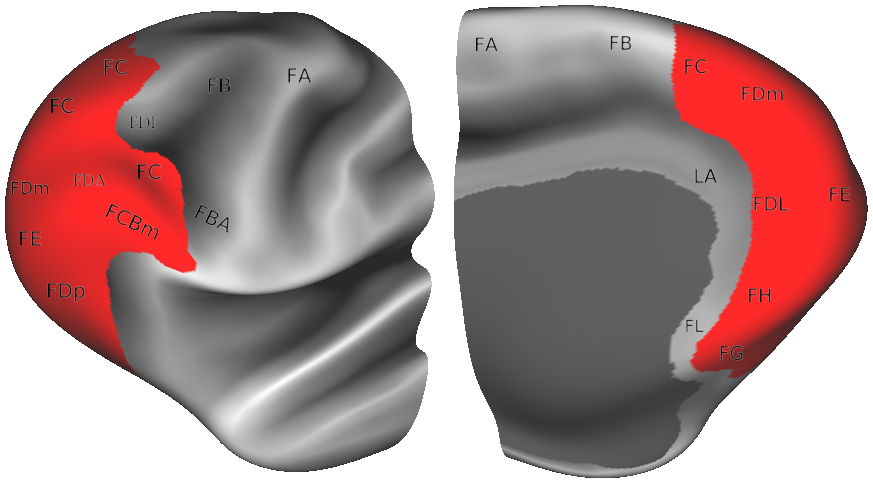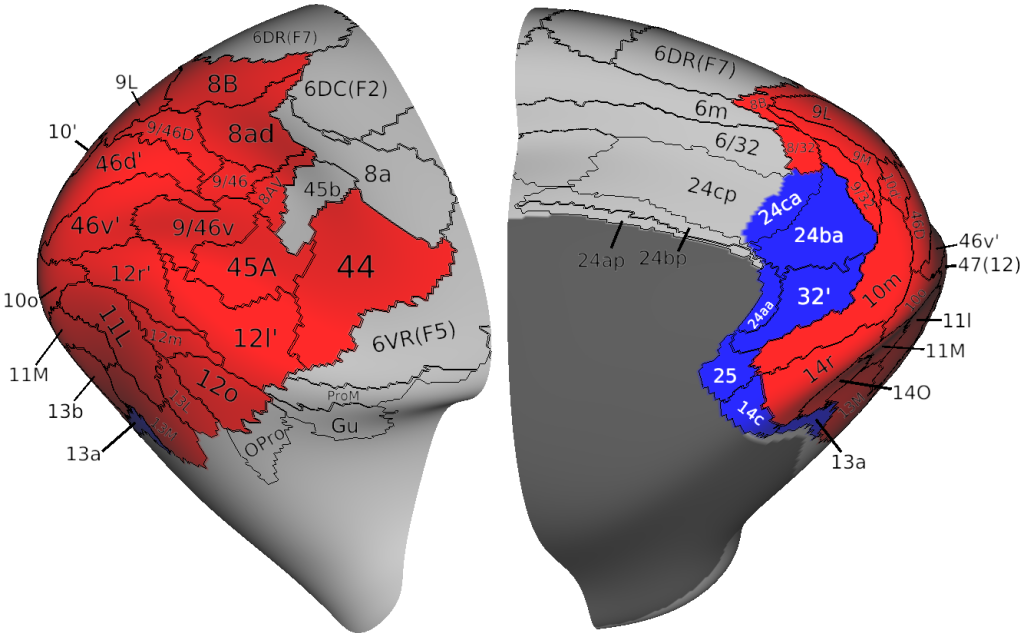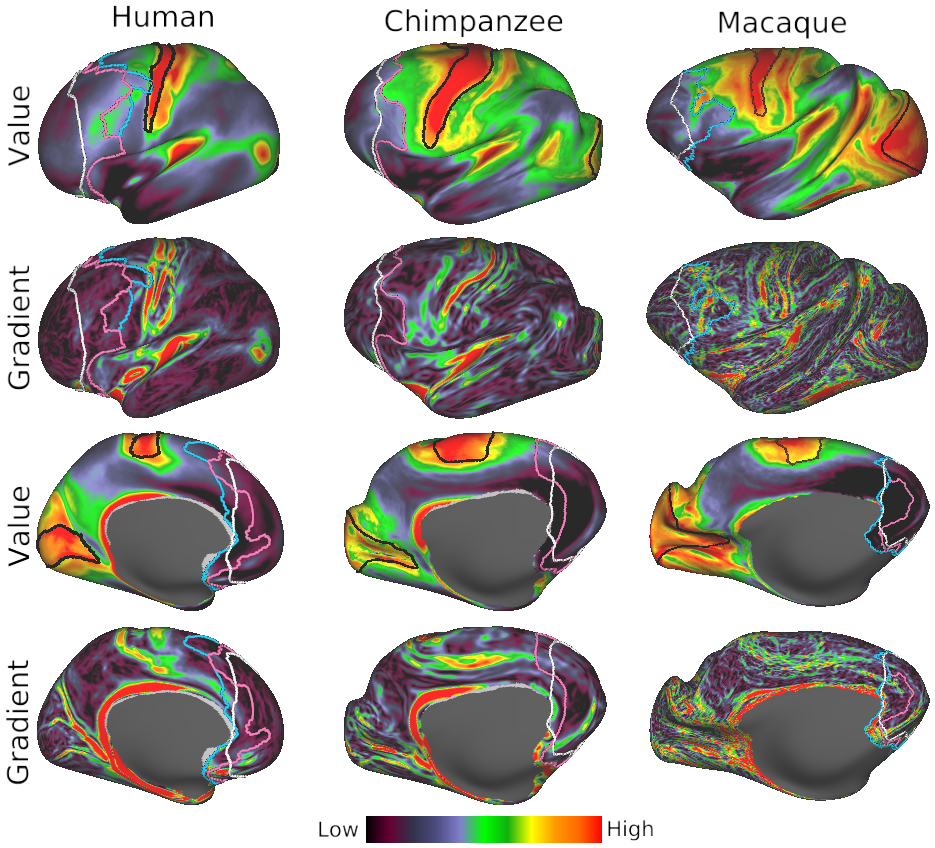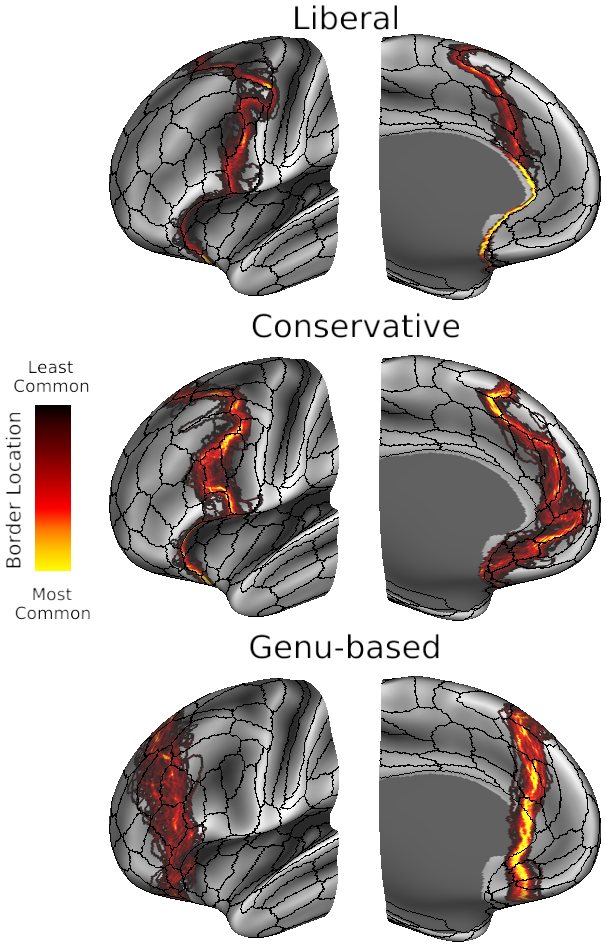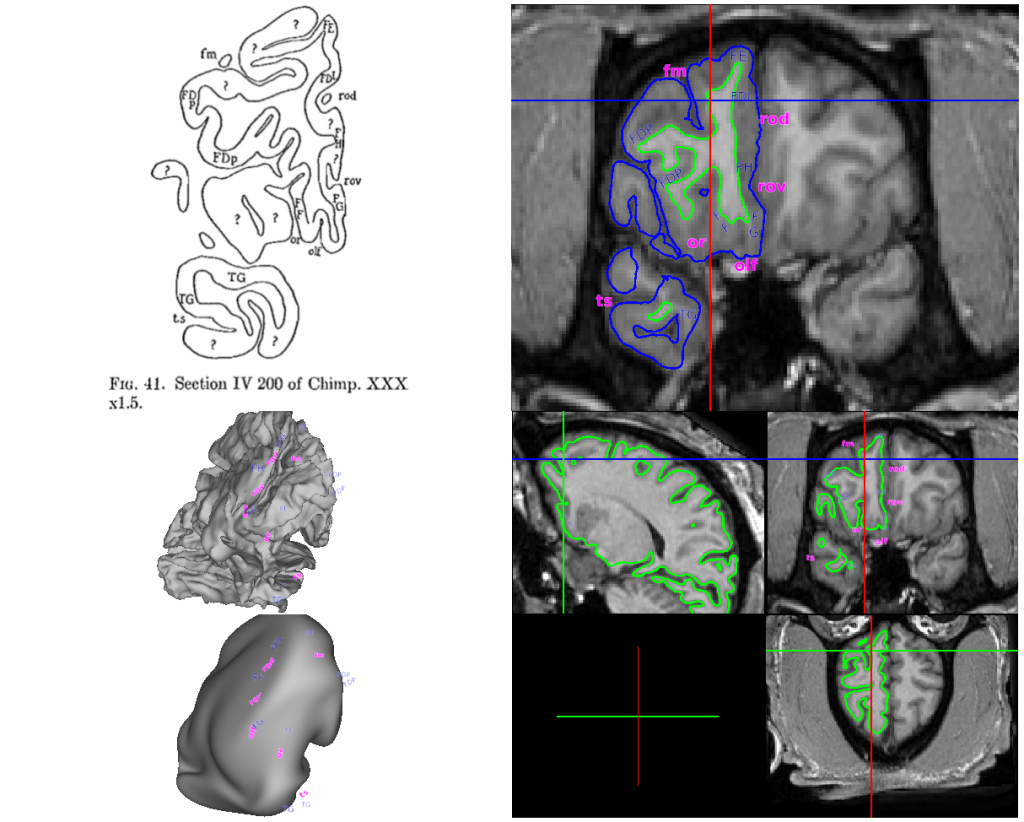FULL TITLE:
Quantitative Assessment of Prefrontal Cortex in Humans Relative to Nonhuman Primates
SPECIES:
Chimpanzee, Macaque, Human
ABSTRACT:
Humans have the largest cerebral cortex among primates. The question of whether association cortex, particularly prefrontal cortex (PFC), is disproportionately larger in humans compared to nonhuman primates is controversial: some studies report that human PFC is relatively larger whereas others report a more uniform PFC scaling. We address this controversy using MRI-derived cortical surfaces of many individual humans, chimpanzees, and macaques. We present two parcellation-based PFC delineations based on cytoarchitecture and function and show that a previously used morphological surrogate (cortex anterior to the genu of the corpus callosum) substantially underestimates PFC extent, especially in humans. We find that the proportion of cortical gray matter occupied by PFC in humans is up to 1.9-fold greater than in macaques and 1.2-fold greater than in chimpanzees. The disparity is even more prominent for the proportion of subcortical white matter underlying PFC, which is 2.4-fold greater in humans than in macaques and 1.7-fold greater than in chimpanzees.
PUBLICATION:
Proceedings of the National Academy of Sciences
- DOI:
10.1073/pnas.1721653115
- Chad J Donahue
- Matthew F Glasser
- Todd M Preuss
- James K Rilling
- David C Van Essen
- St. Luke's Hospital
- Yerkes National Primate Research Center
- Emory University
- Washington University in St. Louis
-
DonahueEtAl2018_PNAS.scene
SCENES:- Figure 1: Parcellations of Human Prefrontal Cortex
- Figure 1B: Conservative Parcellation of Chimpanzee Prefrontal Cortex
- Figure 1C: Parcellations of Macaque Prefrontal Cortex
- Figure 2: PFC Delineations & Cortical Myelin Content
- Figure 3A: Human PFC Border Variability
- Figure 3B: Chimpanzee PFC Border Variability
- Figure 3C: Macaque PFC Border Variability
- Figure S1: Candidate PFC Border in Chimpanzee
- Figure S2: Mapping Bailey et al. to Yerkes29 Chimpanzee Atlas
- Figure S4: PFC Delineations & Cortical Thickness


